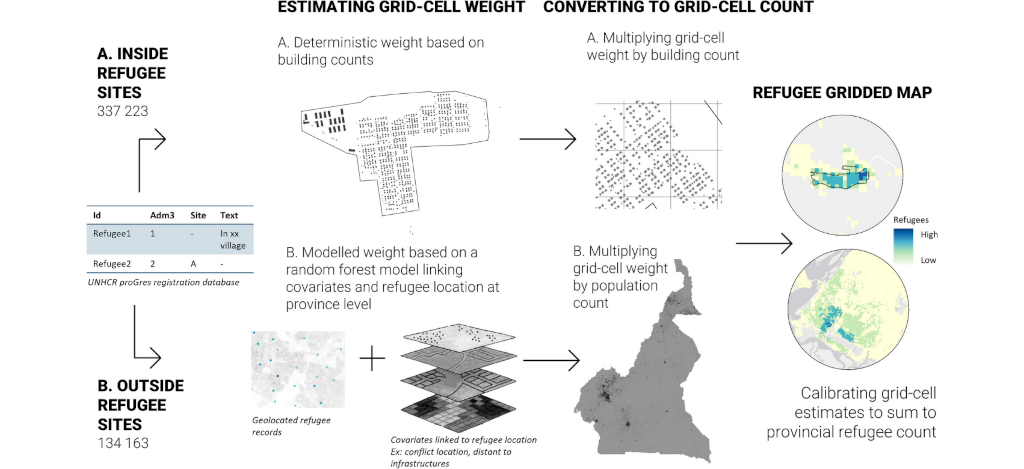A new study published in the Journal of International Humanitarian Action demonstrates how combining humanitarian registration data with satellite imagery and population maps can produce detailed, high-resolution maps of refugee populations – providing crucial information for humanitarian response and resource allocation.
The research, led by WorldPop researchers in collaboration with UNHCR, developed and tested a novel approach for mapping refugee populations at 100-meter resolution in Cameroon, where over 470,000 refugees are estimated to currently reside.
“Having detailed spatial information not only enhances the efficiency of distributing humanitarian aid but also facilitates strategic decision-making regarding the placement of crucial facilities,” explains lead author Edith Darin from WorldPop and the University of Oxford.
The method leverages UNHCR’s registration database combined with building footprint data derived from satellite imagery and other spatial datasets. This innovative approach revealed local variations in refugee settlement patterns that were previously masked by traditional administrative-level statistics.
Key findings include:
- Over 80% of registered refugees could be successfully mapped to specific locations using OpenStreetMap data
- Precise areas of high refugee concentration within administrative regions could be identified, enabling better targeted assistance
- High-resolution mapping can improve survey design and aid delivery for refugee populations
The study provides a scalable framework that could be applied in other contexts to support humanitarian operations and policy planning. “This approach to mapping is important for optimizing the local delivery of primary services including food, medical support and housing infrastructures to ensure that no one is left behind,” notes Professor Andy Tatem, WorldPop Director.
The research represents an important step forward in using novel data sources and methods to better understand and support displaced populations globally. The full paper is available open access at: https://doi.org/10.1186/s41018-024-00157-6



